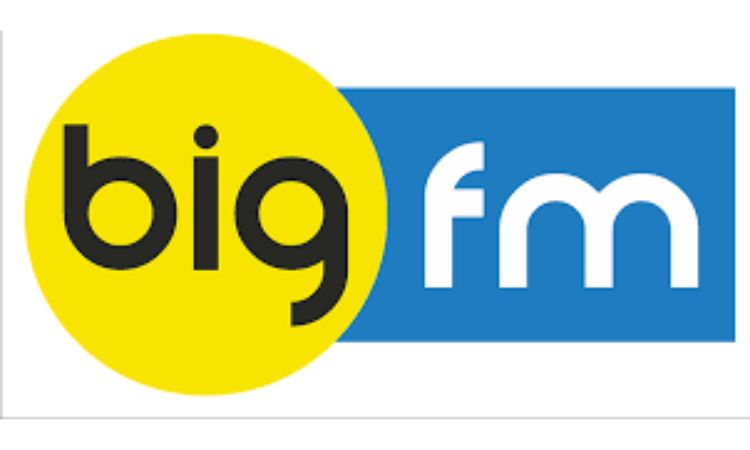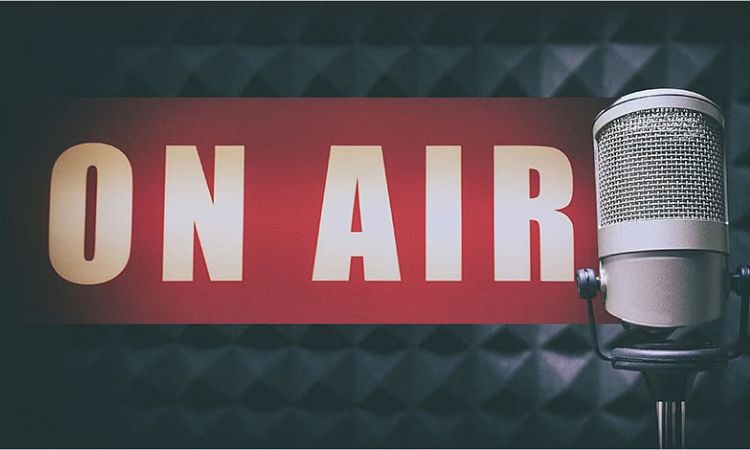We all remember our grandparents and perhaps our parents listening to the radio. Before television became prevalent in homes, the sole source of information and entertainment was radio. Even now, most of us enjoy listening to the radio while driving since it introduces us to new and occasionally forgotten tunes. Today, while traditional television is competing with OTT and other services, radio remains important. So, let us take a look at the radio industry’s history and current state.
The Evolution of India’s Radio Industry: From Inception to Commercialization

Since its start in 1927, India’s radio business has gone a long way. The radio industry’s path has been both tough and thrilling, from being the major source of entertainment and news for Indians to experiencing intense competition from other types of media.
The inauguration of the Indian Broadcasting Company (IBC), subsequently renamed All India Radio (AIR), highlighted the early years of Indian radio. Initially, AIR (All India Radio) was only transmitted in a few languages and covered a few cities. Its reach, however, swiftly grew, and by the 1950s, it was transmitting programmes in a variety of languages across the country.
Private players have been discovered to have offered a fresh viewpoint to the Indian radio sector. They have debuted interesting new programming formats such as music programmes, chat shows, and celebrity interviews. Their emphasis on appealing to certain listener segments, such as youth, women, and sports fans, has resulted in an increase in the popularity of FM radio. As a result, FM radio has become India’s favourite source of entertainment.
The advent of commercial FM radio in the 1990s was a watershed moment in the history of the Indian radio business. Previously, AIR was India’s sole radio broadcaster. However, when the Indian economy liberalised, private businesses entered the radio sector. The government auctioned out FM radio station licences to private entities in several cities around the country. This marked the start of the radio industry’s commercialization in India.
The radio business in India has changed substantially since its inception. In the nation, there are approximately 350 private FM radio stations that appeal to a wide range of audience groups and preferences. Radio has also embraced digital technology, with several FM stations broadcasting their programming online. The advent of podcasting has also provided new opportunities for India’s radio sector. PM Modi recently dedicated 91 FM transmitters in 18 states and two UTs to improve radio coverage in rural regions.
A Comprehensive Evaluation of the Radio Medium

The COVID-19 pandemic has offered a significant boost for businesses to embrace digital technology, helping them to prosper and expand their horizons. Radio, as a medium of communication, has also mastered the nuances of developing material for the present period, which is fueled by digitalization. As a result, it delivers ideas, thoughts, knowledge, and information in a very engaging manner in order to capture and retain the attention of its numerous modern-day audiences. According to industry analysis, the worldwide radio station market will rise at a compound annual growth rate (CAGR) of 4.3% from $83.74 billion in 2022 to $87.31 billion in 2023. This underscores the radio industry’s never-ending evolution.
Big FM Radio: Engaging Content with Digital Expansion and Redefining Radio

BIG FM is one of India’s major radio networks, with a primary frequency of 92.7 MHz. It is a subsidiary of Reliance Broadcast Ltd. It is available to approximately 34 million Indians across the country. BIG FM is noted for its timeless music and thought-provoking content and is a pioneer in storytelling with significant assets such as Suhaana Safar with Annu Kapoor and Yaadon Ka Idiot Box with Neelesh Misra. BIG FM reopened in January 2019 with a new philosophy and positioning statement, “Dhun Badal Ke Toh Dekho.” Dhun Badal Ke Toh Dekho Season 1 premiered with Vidya Balan as the presenter, followed by a successful Season 2 with Sadhguru.
BIG FM’s Journey into the Metaverse and Digital Audio Evolution
BIG FM debuted in September 2006, and since then, it has collected amazing material and launched high-impact communication campaigns that have served as transformational catalysts. With its broad reach, localised programming, and reputable RJs, the brand has served as a ‘thought inspirer’ and an agent of constructive social change. BIG FM revised its positioning in 2019 with this in mind, to take a second look at current problems and dialogues by incorporating new viewpoints. This mindset pervades all content, mission-driven initiatives, and client-integrated marketing. BIG FM launched BIG Radio Online (BRO) in 2020, with music and interactive programming aimed at the youth of Hindi-speaking regions, marking a crucial step in the company’s goal to become a platform-agnostic audio entertainment institution.
Recent times
Many essential assets have already been made accessible in podcast format across multiple audio streaming platforms, indicating that the radio network has made substantial inroads into digital audio storytelling. It has increased its ties even more, with a special emphasis on regional languages. BIG FM has long-standing relationships with Spotify, Gaana, and JioSaavn.

BIG World: BIG FM’s New Meta-verse Initiatives.
BIG FM, one of India’s leading radio networks, has announced “BIG World,” a suite of services that capitalise on the potential of digital media to grow their client base and interact with consumers. The formal announcement was made in the Metaverse when the logo was revealed and the many efforts were presented. The panel discussion included Mr Abe Thomas, CEO of Reliance Broadcast Network Limited, and Mr Sunil Kumaran, COO of BIG FM.
BIG World has the following offerings:
Sunil Kumaran, COO of BIG FM, emphasised the four pillars of BIG World:
- BIG Radio’s Transformation Into an Audio Conglomerate: BIG FM intends to turn itself into an audio conglomerate by capitalizing on its experience in audio production. This pillar focuses on broadening BIG Radio’s services in order to give a more wide choice of audio programming.
- BIG LIVE: On-Ground and Online Living Events: BIG LIVE is a vertical dedicated to organising on-ground and online living events. BIG Cafe online, their flagship service for online concerts, has already built a solid foothold in the market over the last two years.
- BIG Social: Leveraging Digital Expansion for Engagement: BIG Social takes benefit from the rapid expansion of digital media to bring new channels of engagement such as gamification, social commerce, and advocacy. The network’s RJs, who already have a strong effect on radio listeners, have expanded their reach to include digital advocacy for branded content. BIG FM just launched BIG Living, a social commerce website chosen by its RJs that offers environmentally friendly and conscious items.
- BIG Voice Concentrates on Digital Audio Platforms: BIG Voice focuses on digital audio platforms including podcasts and smart speakers. BIG FM has successfully deployed over 200 episodes of original podcasts across 30+ platforms in the last year, responding to the rising popularity of this audio format.
BIG FM, one of India’s largest radio networks, has long been an important player in the business, reaching millions of listeners throughout the country with timeless music and interesting content. With collaborations with key streaming platforms, the network has expanded its reach beyond traditional radio, moving into online radio and digital audio storytelling. BIG FM now aspires to use the power of digital media and its core competency in audio creation to deliver immersive and engaging experiences across many platforms with the debut of BIG World. BIG FM is well-positioned to continue its path as a leading platform-agnostic audio entertainment business in the developing media landscape with these new projects.
Radio Mirchi: Where Entertainment Meets Innovations in Radio Broadcasting

Radio Mirchi, often known as 98.3 Mirchi, is an Indian national network of commercial FM radio stations. It is the first privately held radio station in the country and is owned by Entertainment Network India Ltd (ENIL), a subsidiary of The Times Group. The name “Mirchi” is derived from the Hindi word for red chilli, lending a fiery flavour to the station’s lively programming.
The tagline “Mirchi Sunnewaale Always Khush!” symbolises Radio Mirchi’s dedication to keeping listeners happy and amused. Radio Mirchi has garnered enormous popularity among people across India and abroad because of its interesting programming and vibrant programmes.
The Mirchi Top 20 and Indie Pop 10 weekly music charts are among the highlights of Radio Mirchi’s programming. The Mirchi Top 20 features the most popular Bollywood songs, with a new twist: celebrities may now vote on their favourites.
Radio Mirchi’s reach extends beyond India, having a presence in the Gulf Cooperation Council (GCC) countries of the UAE, Qatar, and Bahrain. This growth has enabled the station to reach a larger audience and disseminate its vibrant vibrations across boundaries.
The Evolution of Radio Mirchi: Redefining Indian Radio Broadcasting
Radio Mirchi, formerly known as Times FM, began broadcasting in Indore, Madhya Pradesh, in 1993. All India Radio (AIR) was India’s sole radio broadcaster at the time. In an attempt to privatise radio transmission, the government began selling airtime blocks on its FM channels to commercial operators who could generate their own programme material. The Times Group’s brand, Times FM, was operational until June 1998, when the government opted not to renew contracts awarded to private operators.
The government announced the sale of 108 FM frequencies across India in 2000, marking the start of the first round of licences. The parent firm of Radio Mirchi, Entertainment Network India Ltd (ENIL), got the most frequencies and thereafter commenced its operations under the name Radio Mirchi.
In the second wave of licences, which took place in January 2006, Radio Mirchi gained 25 frequencies, increasing its reach to 32 centres across the nation. Indore was notable for being the first city in India to have a grade of the first private radio station. Radio Mirchi attempted to appeal to a broad audience since marketers were drawn to the idea of reaching a huge number of listeners at a low cost per thousand.
Radio Mirchi invested approximately Rs. 339 crores in the third wave of licences and won 17 additional channels in locations including Chandigarh, Kochi, Kozhikode, Jammu, Srinagar, Guwahati, and Shillong. They also increased their presence in previously established cities like Bangalore, Hyderabad, Ahmedabad, Pune, Kanpur, Lucknow, Jaipur, Nagpur, and Surat. This expansion increased Radio Mirchi’s presence to 49 locations.
Radio Mirchi expanded its influence outside of India by entering the Gulf Cooperation Council (GCC) countries. Its activities began in the United Arab Emirates (UAE), Bahrain, and Qatar. While Radio Mirchi UAE is currently branded as KADAK FM, 102.4 FM Mirchi returned to the UAE in 2021.
Radio Mirchi has established itself as a popular and beloved radio network over its exciting history, connecting listeners with music, entertainment, and enjoyment across India and beyond.
A Digital Entertainment Vision and Radio Leadership
Current Scenario
Yatish Mehrishi, Mirchi’s newly appointed CEO, succeeded Prashant Panday and now brings 25 years of expertise in consumer-facing companies to the post. His background includes sales, marketing, and operations in industries such as fast-moving consumer products, telecommunications, media, and retail. Mehrishi’s goal as CEO is to convert Mirchi into a prominent digital entertainment firm while keeping its status as India’s top radio brand. Mirchi has already made inroads into the digital arena with the launch of Mirchi Plus, a pure-play audio platform, and plans to maintain fan loyalty and advertising support through a two-pronged strategy combining radio and internet initiatives.
Mirchi credits its success in the extremely competitive radio business to its staff and the renowned Mirchi culture. The firm prioritises hiring top creative and sales talent while adhering to basic principles such as informed risk-taking, constructive conflict, a non-hierarchical structure, and a joyful working atmosphere. As online audio platforms become more competitive, Mirchi intends to harness its conventional radio skills with digital projects such as Mirchi Plus and the programmatic ad network M-Ping. Mirchi’s complete content and advertising approach provides audience loyalty and advertising support.
Mirchi understands the value of data analytics in developing its music and content strategy, as well as its sales, pricing, and go-to-market strategy. Data analytics will be critical in boosting product offerings and gaining more subscribers as the organisation moves into the digital sector. To efficiently exploit data, a specialised sector for digital analytics is being built.
Mirchi recognises the importance of radio on the automobile dashboard as huge displays become the major entertainment centre in cars. Car listenership is growing, and Mirchi believes that radio’s distinctive content offers, including tailored music, traffic alerts, social messaging, and presenter companionship, will keep it relevant. In the event that automobile manufacturers remove tuners, Mirchi’s Mirchi Plus audio platform will be important in supplying radio programming.
Technology is critical to the success of Mirchi’s business. From radio broadcasts to client contacts, staff involvement, and financial operations, the organisation aggressively embraces technology in all aspects. Technology is used not only to generate expansion but also to streamline operations and reduce expenses, which is especially important in a post-pandemic society.
Future Prospects

In the future, the radio and audio business in India will be challenged by quickly changing consumer behaviour and the availability of media content options. To address this, Mirchi emphasises the significance of a strong content strategy that is always adjusting to suit the changing demands of its audience. The Mirchi Plus app and radio stream are expected to merge, enabling market segmentation to cater to specific consumer/listener needs. Despite the obstacles, radio and audio have the benefit of being a passive medium that does not need customers’ active attention.
Key Radio Drivers: Trends in the Market and Digital Tools
Radio has evolved into a forward-thinking medium that welcomes technical improvements in the broadcasting industry. It effectively disseminates information, establishes personal connections with listeners, and engages a huge audience. It is a favoured media due to its mobility, affordability, and accessibility. Radio promotes social change, inspires curiosity, and empowers people to act.
- Thinking Digitally and Using Digital Tools: “Radigitalization” has been crucial in the evolution of the radio business. The convergence of radio and digital technologies has increased the audience and advertiser base. Radio has effectively replicated its terrestrial intellectual assets on digital platforms, thanks to digital technologies that provide tech-enabled entertainment possibilities. The use of digital technologies improves productivity, reach, and engagement.
- Creating the Framework for Radio’s Success: Adopting digital technology, leveraging digital tools and platforms, and providing personalized yet relevant content are all required to ensure radio’s relevance in the digital age. Priorities include diversifying content techniques, providing relatable music and city-related information, and staying ahead of the competition. Radio stations create a strong online presence through social media, capitalizing on RJs’ popularity as social media influencers for sponsor integrations and audience amplification.
Radio survives by embracing digital technologies and adjusting to market developments. Its expansion as a modern medium, as well as its integration with digital technologies, have increased its viewership and advertiser base. The use of digital technologies improves productivity, reach, and engagement. The key to radio’s success is to think digitally, provide relatable programming, and embrace social media.
The Future of Radio: Embracing Digitalization and Integration
As an interactive medium with socially relevant material and prominent RJs, radio has enormous potential. Digital channels have increased the industry’s reach and voice. Radio is transitioning into an audio entertainment firm, delving into podcasts, web radio, and social content to meet customers’ on-demand content requirements. The next trend defining radio’s future is digitalization.
The Integration of Conventional and New-Age Mediums: The future of radio lies in the integration of conventional and new-age mediums. It extends beyond on-air audio information to make a direct emotional connection with the listener. The integration of radio with digital platforms, known as “radigitalization,” will be critical to the industry’s future. This enables radio to exploit podcasts, interact with music platforms, and successfully advertise programming.
Global Trends and Digital Transformation: Private FM stations worldwide shift from analogue to digital broadcasting. Digitalization in India has been sluggish, but the potential for change is substantial. HD Radio, developed by Xperi Corporation, successfully tested digital radio technology on FM frequencies with All India Radio (AIR). Digital broadcasting secures the industry’s future and overcomes the digital divide. The solutions provided by HD Radio transmit information, entertainment, and alerts to a variety of devices, opening up the potential for digital radio broadcasting in India.
Conclusion:
In a nutshell, India’s radio business has demonstrated amazing durability and adaptation from its start in 1927. Radio has changed and prospered, from being the major source of entertainment and information to competing with other media genres. In the 1990s, the commercialization of FM radio attracted private companies and introduced new programming formats that catered to a wide range of audience groups. With the advent of digital technology, radio has expanded into internet broadcasting and podcasting, creating new options. Despite technical developments and the COVID-19 epidemic, radio has thrived, fulfilling the evolving requirements of listeners and advertisers.
In the future, radio will benefit from digitization and integration. Radio can broaden its reach, engage people, and deliver personalised and on-demand content by embracing digital platforms and technology. The blending of traditional and new-age mediums, known as “radigitalization,” will be critical in moulding the industry’s future. With global trends and digital revolutions happening, India has enormous potential for development in digital broadcasting, which will help to bridge the digital divide. Radio continues to be a powerful and current medium, establishing a direct emotional connection with listeners while adapting to the ever-changing media landscape.















